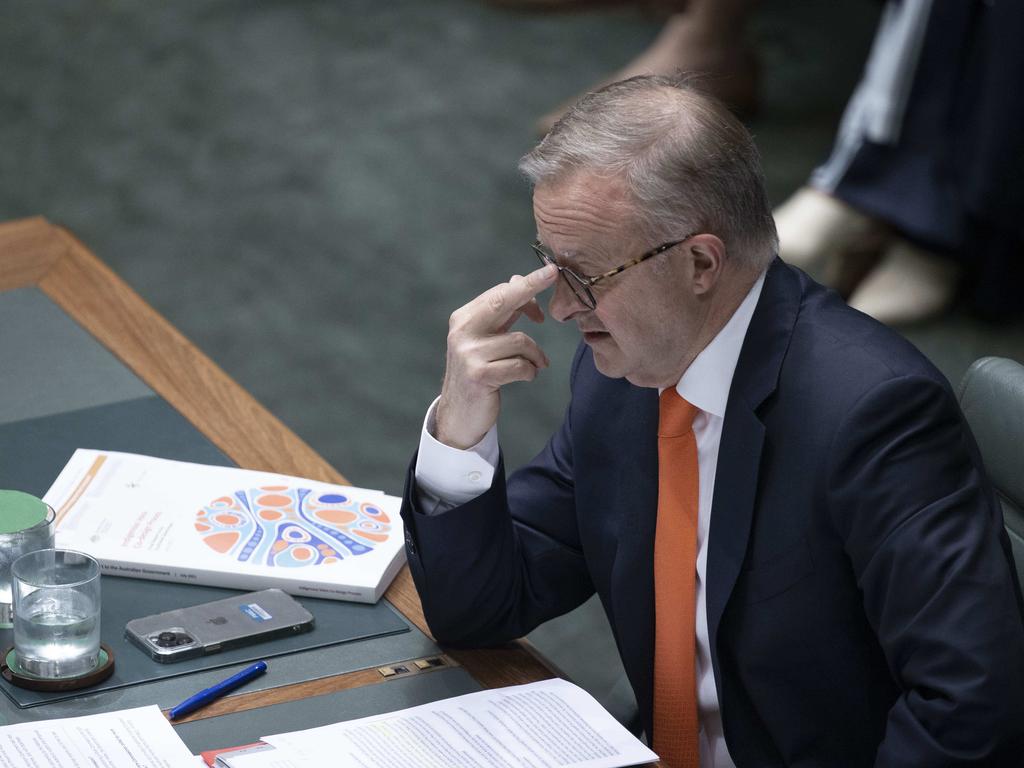Teals have yet to prove their staying power

Six new teal MPs elected across three states alongside a host of other newly and re-elected community independents delivered the largest crossbench in Australian political history last May. If the trendlines continue so will the erosion of the two-party system, one of the most robust anywhere in the world.
But teal momentum isn’t guaranteed. The teals fell short of the balance of power in the House of Representatives, even though that was the benchmark they set for themselves.
And in the recent Victorian election the teals failed to pick up a single seat, despite high hopes (even claiming victory before counting was complete).
The NSW election next March will present another test. It is more likely the teals will win seats there. The teal phenomenon does best when it challenges incumbent conservative governments, as happened federally.
Which is also a roundabout way of highlighting the challenge afoot at the next federal election. There is little need to vote teal to protest against the Liberal Party when it’s out of office, as we saw in the Victorian election.
The disappointment of failing to control the balance of power could assist the teals in building long-term political careers, not having been forced into propping up a new Labor government.
We all saw the impact in traditional conservative electorates when Tony Windsor and Rob Oakeshott threw in their lot with Julia Gillard’s minority Labor government following the 2010 hung parliament. A good government to be sure, it was painted as dysfunctional, and Windsor and Oakeshott retired from politics rather than face the wrath of their electorates. When both men tried to make political comebacks they fell short, tainted in the eyes of one-time supporters.

That said, the situation today is a little different in teal seats, based on the data provided by the Australian Election Survey. Just under 20 per cent of teal voters identified as one-time Liberal voters, fewer than might be expected. It highlights the importance of teals stealing votes from Labor (which mostly ran dead in these seats) as well as galvanising the support of swinging voters. In Victorian state seats teals expected to win, they ran third behind both major parties.
Independent ACT senator David Pocock (not strictly speaking a teal, but he did secure Climate 200 funding) has had more impact on the current federal parliament than the entire collection of independents in the lower house combined. That’s because he often holds the casting vote when Labor and the Greens agree, with the government searching for the extra Senate vote needed to pass legislation.
It prompts the question: will the teals seek to migrate to the Senate at the next election or perhaps the one after that, if their phenomenon continues to rise? Their collective mantra has been the value they add as community independents who put their local areas first, not a political party.
The same logic could apply to senators as states’ representatives. At one level it is harder to win Senate seats (a much larger collection of votes across entire states). But the quota to get elected, at about 14 per cent (excluding territory senators), is lower than the 50 per cent plus one needed in individual member electorates for the lower house.
The teal showdown at the next federal election that might be the most interesting to watch could be in Kooyong, assuming Josh Frydenberg chooses to recontest the seat he lost to Monique Ryan. The former treasurer lost his seat 47 to 53 per cent, despite throwing considerable resources at retaining the traditional blue-ribbon seat.
While Ryan will have the advantage of incumbency on her side next time, she won’t have the added advantage of campaigning against Scott Morrison and an incumbent Liberal government.
Unencumbered by the burden of being treasurer, Frydenberg would be able to spend a lot more time in the electorate canvassing for votes well ahead of polling day.
On balance I would expect Ryan to be able to fend off a challenge from Frydenberg, or anyone else for that matter. That is despite her lurch further to the left on various issues than many of her teal counterparts: supporting Labor’s industrial relations laws, opposing the stage-three tax cuts and holding an arguably hypocritical stance on wearing masks may have raised eyebrows in Kooyong.
Ryan is still likely to beat any Liberal taking her on in Kooyong because of the changing demographics in the seat, as well as the difficulties Peter Dutton could have wresting votes back in Victoria. The federal Opposition Leader may not do any better in Victoria than Morrison was able to.
This is the great conundrum in Frydenberg’s hopes of a comeback: winning with Dutton as leader is hard. Frydenberg wants to return to lead the Liberals one day, but if the current leader is a barrier to entry, that comeback won’t happen.
Conversely, if Dutton exceeds expectations and delivers a strong Liberal performance in the southern states and in teal seats, why wouldn’t the party keep him as leader (even in defeat), just as the Liberal Party retained Tony Abbott after the close but unsuccessful 2010 result?
One thing we all know is that Frydenberg doesn’t want to return to politics to sit in someone else’s cabinet or shadow cabinet.
The Liberal Party’s post-election review highlighted that its brand is no longer fit for purpose. Some of us have known that for many years. Fixing that perception, certainly in teal seats, is a necessary prerequisite to winning them back.
But doing so is no certainty of success.
Renowned political scientist Ian Marsh wrote a book in 1995 titled: Beyond the Two Party System: Political Representation, Economic Competitiveness and Australian Politics. His thesis was that major parties, long dominant within our system, might not be capable of accommodating the changing needs of society.
There have been plenty of false dawns predicting the death of major parties, thereby supporting his thesis. But we’ve had to wait nearly 30 years to see the rise and rise of the greatest challenge to the dominance of the two-party system take hold. As Marsh hypothesised, it has been built on political learning taking power away from traditional political elites. But has that power simply been handed to new elites, who are also disconnected from the mainstream?
That remains to be seen. We will be able to answer that question only if the community independents movement survives, then thrives into the medium to long term.
Whatever happens, it is an exciting time to be a political scientist!
Peter van Onselen is professor of politics and public policy at the University of Western Australia and Griffith University.






One of the questions in Australian politics that will be answered in the coming years is whether the rise of the teals has been greatly exaggerated. Right now it is hard to overplay the significance of their arrival.